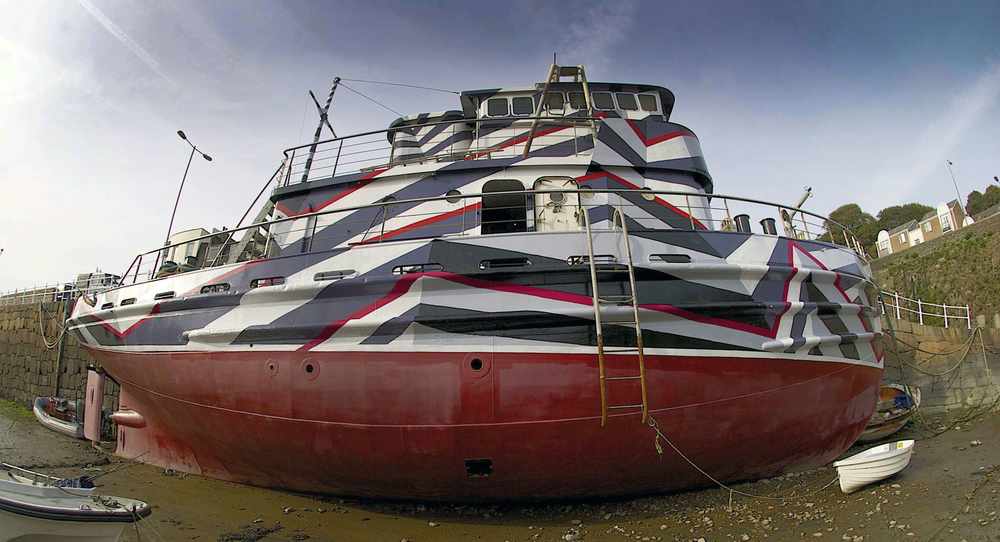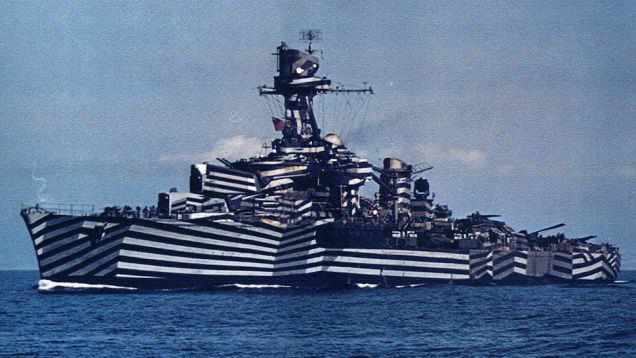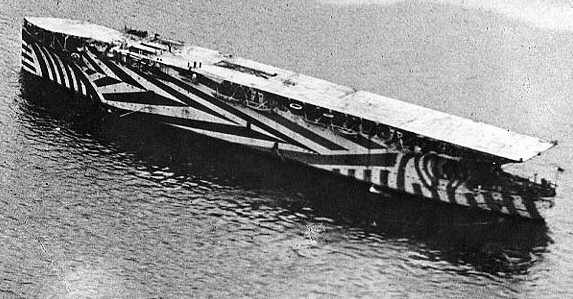The petition has been lodged in an effort to persuade the Ports of Jersey to help keep the ex-US Army tugboat, Elektra, in the Island.
Earlier this year, the vessel, which is berthed in the English Harbour, underwent a radical transformation when it was ‘dazzled’ by Ian Rolls, and it is hoped that the boat will be used as a canvas for other local artists as well as for holiday lets. The striking black and white design was created by Mr Rolls as part of the Skipton Art Series in April.
Check out more photos of the Dazzle ship here
Dazzle camouflage, which consists of complex patterns of geometric shapes in different colours, was used extensively during the First World War, and to a lesser extent in the Second World War.
The petition, which has been signed by more than 200 people, has been created by a group known as Dazzle Ship Jersey.
The ship, which is currently in a temporary berth, needs a permanent location before planning permission can be submitted to turn the ship into holiday accommodation.
Lee Rainbow, who owns Elektra with his wife Kayli, said: ‘Ports of Jersey have said that they would like to see that the public are on side and that is why we have got this petition going.’
As part of the plans set out in the petition, Elektra could be used as accommodation for tourists.


The group says that it plans to re-invest income raised through letting the boat out to tourists into making the vessel sea-worthy as it cannot currently set sail with passengers due to health and safety regulations.
It also hopes that other artists will be given the chance to put their designs on the boat.
The petition says: ‘Some might have the view that an ex-US army tugboat has nothing to do with Jersey.
The petition can be found here
‘In principle this is correct, however she has been in Jersey for over 20 years and has now been transformed into a work of art.
‘She could offer Jersey a unique attraction for tourists and also locals.
‘She comes with plenty of fascinating history that we would love to share with all those who will listen.
‘We need to demonstrate to the Ports of Jersey that there is interest from both locals and tourists in providing her for let.’


Dazzle camouflage was used extensively in the First World War and is credited to marine painter Norman Wilkinson, who went on to become President of the Royal Institute of Painters in Watercolours.

He first suggested the system of stripes and complex geometric shapes which he called ‘dazzle painting.’
The use of dazzle camouflage was extensive during the First World War as a means of making it hard for the enemy to target ships accurately.
The camouflage didn’t aim to hide the ship, but to make the ship’s appearance so optically distorted that it was difficult for a submarine to calculate the target’s course, range, speed and heading.
The effectiveness of the camouflage was not impossible to evaluate and evidence of its success was mixed.
However, it was used by the Royal Navy and the US Navy in the First World War and on a smaller scale in the Second World War.
The bold abstract patterns caught the attention of contemporary artists of the time, such as Picasso who claimed that it was invented by the cubists.
British vorticist artist Edward Wadsworth who supervised dazzle patterning to over 2000 ships painted a series of pictures on the subject after the war.







